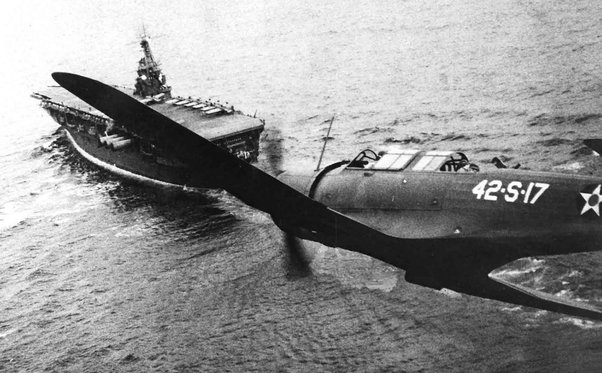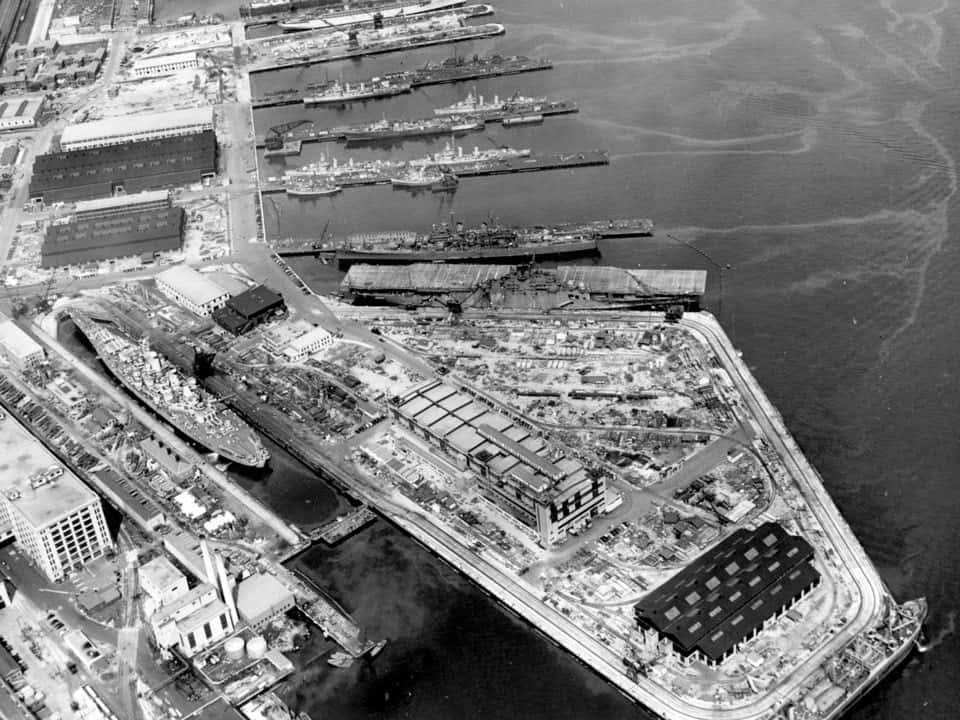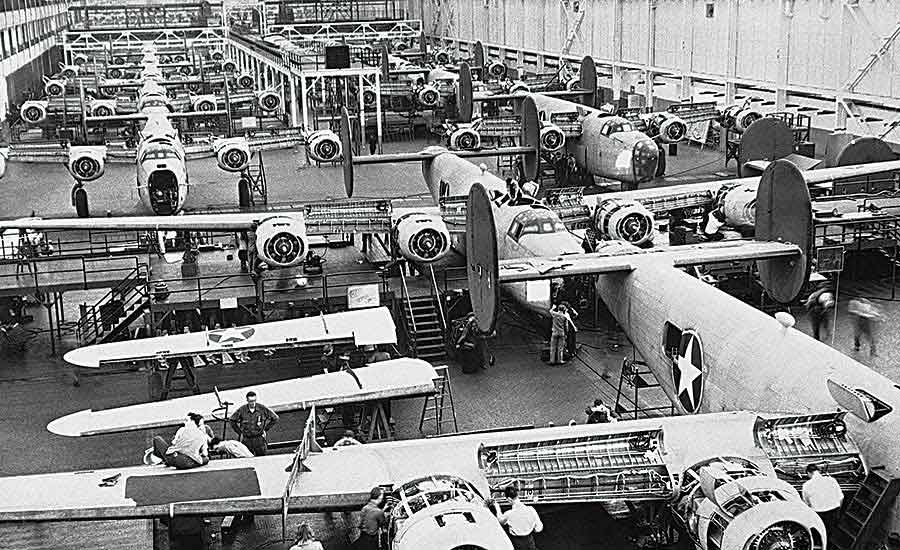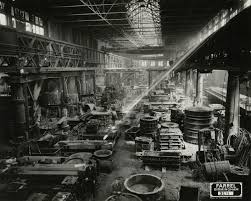A Short History of the Iron Foundry in America: WWII Naval and Air Innovations

The iron foundry has been a part of many innovations in everyday life, industry, and military technology. Some of those innovations were for things that already existed. Some of them were for technologies that were new to the world. During World War II, we saw both come into play.
 The World’s Navies Evolve
The World’s Navies Evolve
The navy was not immune to the advances in technology. As the age of the masted ship set on the horizon, the age of steam power brought faster and more powerful ships. In World War I the capital ship was the dreadnought-class battleship. This classification was defined by the HMS Dreadnought, which was launched in 1906. It was the first warship built with an “all-big-gun” construction and steam-turbine propulsion, relying on Britain’s iron foundries for almost all of her construction. The focus was on a warship that was outfitted with an unprecedented number of high-caliber guns. She was fast and powerful. The thought of facing her in battle was so gripping that the other nations in the world began an arms race just on beating the specifications of that single battleship. Germany was especially motivated, intending to threaten British maritime superiority. By the time the Great War broke out, however, the British still possessed the largest navy on Earth.
Those days were now a dim memory. At the end of WWI, the German fleet surrendered to the British navy and was gathered in the Scapa Flow in the Orkney Islands. Under the command of Rear Admiral Ludwig von Reuter, the German crews that were left manning the ships scuttled them rather than allowing them to be used against Germany. In the early 1930s, Germany began to rebuild its navy, directly violating the Treaty of Versailles. Intending to surpass the new “super-dreadnought” battleships, Hitler commissioned two ships that were in the “fast-battleship” class. These were the Bismarck and her sister ship Tirpitz, which were launched from the shipyards of Hamburg in February of 1939. Within eight months of her official commission in August of 1940, the Bismarck would sink the famed HMS Hood and subsequently was sunk herself.
US Navy Watches With Growing Concern
As the Americans watched this with growing concern, the US Navy took action. Initially, the Navy was stymied by a Congress that was unwilling to fund a large build-up of warships. This was exacerbated by a series of treaties agreed to with Europe and Asia separately. The Germans regularly ignored these treaties and the Japanese found ways around them. The biggest concern was the Pacific, with thousands of miles of open water between US territories and dependent nations. The early failures to recognize and address this threat by American politicians slowly changed.
By the end of the 1930s, the United States began building a larger navy to keep pace with the expansions seen in Germany and Japan. The security of the nation was at stake. When Japanese planes were bombing Pearl Harbor, the US Naval fleet consisted of just 337 ships (compared to Japan’s 650 and Germany’s 289). That was an increase for the US Navy from 187 in 1933. This build-up quickened pace after America joined the war. Over the course of World War II, the United States would add over 1,200 major combatant ships, bringing the US Navy to a total of over 1,500 vessels. This represented 70% of the world’s ships over 1,000 tonnes. Over three million men were required to man those ships over the course of the war.
 A Major Gamechanger
A Major Gamechanger
At the close of the 1930s, the military was now considering an even more decisive weapon: the airplane. In the late days of the first world war, open-cockpit biplanes and triplanes fought extraordinary dogfights over the European countryside. The legend of the flying aces caught the popular imagination, giving rise to a new generation of would-be pilots. The air force as it was in those days didn’t play a very large part in the outcome of the battles of WWI. However, the potential was seen by both the army and the navy. Each of these branches of the military worked to develop its own version in the United States. In Germany, Hitler devoted a large part of his attention to the development of an air force, in yet another act of defiance of the European powers. Initially, he had the aircraft built outside of Germany, but soon he shed even that pretense.
Hitler was now armed with the most technologically advanced air force on the face of the Earth. Unlike their American counterparts, the Germans recognized the unique capabilities and needs of their air force. Instead of allowing the army and navy to develop competing versions of the same corps, the Germans established a separate air force called the Luftwaffe. At its height, the Luftwaffe had around 375,000 pilots, flight crew, and ground crew. There was a total of over 4,200 operational aircraft.
Air Superiority Adds Terror To Blitzkrieg
They took to the skies to wage a war of terror across continental Europe. The quick victory in Poland in 1939 was due to German air superiority. German planes were decisive in the invasion of Norway in 1940. Later in 1940, they allowed the German war machine to defeat the French in just over six weeks. They flew over the English Channel to devastate and traumatize the United Kingdom in 1940-1941. Initially, the Luftwaffe focused on the airstrips and airplane factories that kept the British Royal Air Force (RAF) in the air. Then, in September of 1940, they switched their objective and began the first of their attacks on the civilian population. On September 7, 1940, radar techs watched as over 1,100 planes stretched over 800 miles descended on English cities. It was the beginning of the Blitz. German bombers relentlessly pounded British military, industrial, and residential districts during the Blitz, as RAF Hurricanes and Spitfires bravely defended the British Isles. The Germans left rubble and tragedy in their wake, although they failed to destroy their most important target: namely, British morale.
American foundries cranked out the parts to build an equally superior air force for the United States. This began with the production of essential parts for Spitfires and Hurricanes for the British RAF by Martin. By the early 1940s, Boeing, Lockheed, and Douglas were relentlessly ordering parts from American iron foundries. The US military was pressing for expedited production of Warhawk, Thunderbolt, and Mustang airplanes to expand coverage in both theaters of the war.
 Innovation Of Iron Foundries
Innovation Of Iron Foundries
The role of the iron foundry during World War II was to produce iron castings for military equipment, munitions, airplanes, and ships. The US iron and steel industry had been established in the 1600s, switching from charcoal to coal in ore smelting and adopting the Bessemer process in the late 1800s. Iron furnaces were located along the East Coast of the US, with most smelting taking place near iron deposits in eastern Pennsylvania, New York, and northern New Jersey. The replacement of charcoal with coal revolutionized the industry and tied steelmaking to coal-mining areas.
Iron foundries spread across the South and Ohio River Valley, eventually moving up the Mississippi and into the western Great Lakes region. These foundries produced state-of-the-art metal castings that were crucial to America’s arsenal of victory during both world wars. The inoculation of gray iron at the turn of the century was used to reduce or even eliminate variations in production quality. This was widely used by the late 1920s and contributed particularly to the quality of parts used in guns. The increase in demand for iron for parts used by every branch of the military led to an expansion of the use of mechanical charging systems. These were incorporated into foundry cupolas to speed up the melting process.
Iron Foundries Help Rebuild The World
Many improvements and innovations came to the iron foundry industry over the course of both world wars. These would be very helpful during the rebuilding of Europe for the second time. As the world moved into the post-war era, iron foundries found their place in the building of a new, modern world.
Willman Industries is proud to be a part of that rebuilding. By establishing ourselves as a leader in quality and dependability, we have built a reputation of excellence over the past 100 years. Our employees are committed to it and our customers can attest to it! Contact us today to find out how we can help you provide your best products to your customers!

